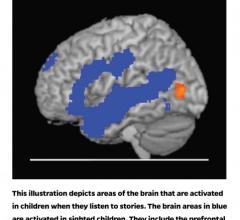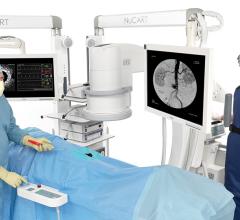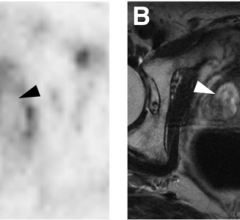Kubtec announced the U.S. Patent & Trademark Office has issued Patent No. 14/503,130 for the technology incorporated ...
Accuray Incorporated has received a multi-system order from 21st Century Oncology for one CyberKnife M6 and four TomoHDA ...
Merge Healthcare Incorporated was recently recognized as a top vendor in the KLAS 2015 Midterm Performance Review ...
Radiology departments have many different needs and face a wide variety of challenges that can impact their departments ...
Ascendian Healthcare Consulting, a national healthcare IT consultancy, has partnered with Yuma Regional Medical Center ...
A California software company, www.YourScan.org, has put out a call to women who have had to face the difficult ...
C4 Imaging LLC today announced it has been awarded a $1.32 Million Phase II Small Business Innovation Research ("SBIR") ...
Despite decades of progress in breast imaging, one challenge continues to test even the most skilled radiologists ...
A study published online Aug. 24 by the journal Pediatrics finds a significant decrease in the use of computed ...
Carilion Clinic, headquartered in Roanoke, Va., consists of seven hospitals and provides health care services for one ...
Members of the American Society of Radiologic Technologists can now access the new ASRT Communities, an updated online ...
Bayer Radiology’s Barbara Ruhland and Thom Kinst discuss how radiology departments can address the many different ...
The American College of Radiology (ACR) recently published a statement on its website confirming that log file ...
RedRick Technologies, a provider of ergonomic radiology furniture, monitor mounting solutions and reading room design ...
On April 30, 2015, a major milestone was reached at Ackerman Cancer Center in Jacksonville, Fla., when the first patient ...
eHealth Saskatchewan plays a vital role in providing IT services to patients, health care providers, and partners such ...
Medical equipment manufacturer Quantum Medical Imaging has completed installation of a Quantum Q-Rad-Digital Radiographic System at Colorado Springs Orthopaedic Group in Colorado Springs, Colorado. The sale and installation was facilitated by Medical Imaging Technologies, a certified Quantum/Carestream dealer.
By early childhood, the sight regions of a blind person’s brain respond to sound, especially spoken language, a Johns Hopkins University neuroscientist has found. The results, published this week in The Journal of Neuroscience, suggest that a young, developing brain has a striking capacity for functional adaptation.
CompView Medical announced the release of the NuCART, a turn-key, all-in-one mobile boom system with integrated visualization.
August 21, 2015 — Loyola University Medical Center is the first and only hospital in Illinois to offer a new ...
August 21, 2015 — A molecular imaging biomarker is able to detect fast-growing primary prostate cancer and distinguish ...
Non-invasive stereotactic body radiation therapy (SBRT) is effective and well-tolerated by patients with inoperable early-stage or node-negative non-small cell lung cancer (NSCLC) tumors larger than 5 cm, according to a study published in the International Journal of Radiation Oncology Biology Physics.
A national risk model that gauges a woman’s chance of developing breast cancer has been refined to give a more accurate assessment. The revised figures, based on data from more than 1 million patients, reveal a 300 percent increase in a subset of women whose five-year risk is estimated at 3 percent or higher.
The biggest trends at the recent Association for Medical Imaging Management (AHRA) annual meeting included concerns over ...


 August 26, 2015
August 26, 2015 


















